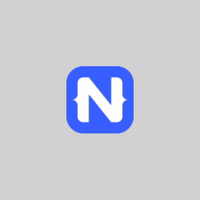Animations with code
The easiest way to animate a single View is by using the View.animate method which accepts an AnimationDefinition, immediately starts the animation and then returns its finished promise.
Example 20: How to execute animation on single view.
You should create an
Animationclass in order to be able to cancel the animation. This is demonstrated below.
The AnimationDefinition interface
The AnimationDefinition interface is central for defining an animation for one or more properties of a single View. The animatable properties are:
- opacity
- backgroundColor
- translateX and translateY
- scaleX and scaleY
- rotate
- width and height
The AnimationDefinition interface has the following members:
- target: The view whose property is to be animated.
- opacity: Animates the opacity of the view. Value should be a number between 0.0 and 1.0.
- backgroundColor: Animates the backgroundColor of the view.
-
translate: Animates the translate affine transform of the view. Value should be a
Pair. -
scale: Animates the scale affine transform of the view. Value should be a
Pair. - rotate: Animates the rotate affine transform of the view. Value should be a number specifying the rotation amount in degrees.
- duration: The length of the animation in milliseconds. The default duration is 300 milliseconds.
- delay: The amount of time, in milliseconds, to delay starting the animation.
-
iterations: Specifies how many times the animation should be played. Default is 1. iOS animations support fractional iterations, i.e., 1.5. To repeat an animation infinitely, use
Number.POSITIVE_INFINITY. -
curve: An optional animation curve. Possible values are contained in the AnimationCurve enumeration. Alternatively, you can pass an instance of type
UIViewAnimationCurvefor iOS orandroid.animation.TimeInterpolatorfor Android. - width: Animates view's width.
-
height: Animates view's height.
All members of the interface are optional and have default values with the following exceptions:
target is only optional when calling the
animatemethod of aViewinstance since it is set automatically for you.- You must specify at least one property from this list: opacity, backgroundColor, scale, rotate or translate.
The Animation class
The Animation class represents a set of one or more AnimationDefinitions that can be played either simultaneously or sequentially. This class is typically used when you need to animate several views together. The constructor of the Animation class accepts an array of AnimationDefinitions and a boolean parameter indicating whether to play the animations sequentially. Creating an instance of the Animation class does not start the animation playback. The class has four members:
- play: A method that starts the animation and returns the instance it was called on for fluent animation chaining.
- cancel: A void method that stops the animation.
- finished: A promise that will be resolved when the animation finishes or rejected when the animation is cancelled or stops for another reason.
- isPlaying: A boolean property returning True if the animation is currently playing.
Animating multiple properties
It is easy to animate multiple properties at once; just pass the desired animatable properties and the corresponding values when calling the animate function.
Example 21: How to animate multiple properties.

Chaining animations with promises
The animate method returns a promise that you can use to chain animations, as shown in Example 21.
Example 22: How to create chain animations.
